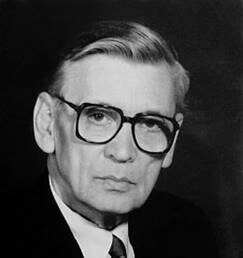Ferenc Halász (1930-1994)

By Péter Halász:
Performing teachers dominate the highest levels of music education around the world. In contrast, music teachers who do not have the opportunity to perform in concerts and experience the routine of the podium are seemingly at a disadvantage. However, there are great teaching geniuses everywhere who are not known for their teaching as a second career, but only through their students. They usually know something about the methodology of instrumental playing and the physiological and psychological processes of musical development that their actively performing colleagues do not have the time to learn. In the field of violin teaching alone, recent examples include Yuri Yankelevich in Moscow and Ivan Galamian in New York, as well as Ferenc Halász, who taught at the Liszt Academy for more than three decades.
Born in Győr in 1930. After studying at the local music school, he entered the Franz Liszt Academy of Music in 1946 in the class of Ferenc Gábriel and graduated in 1953 as a student of Ede Zathureczky. From the beginning he was mainly interested in teaching violin. Between 1954 and 1959 he taught at the primary level in the VI. district and in the Újpest school of the Budapest Music School Organisation, from 1959 he became acquainted with the problems of secondary education at the Béla Bartók Conservatory, and from 1962 until his death in 1994 he was a teacher at the Ferenc Liszt Academy of Music. But he was not unfaithful to the younger generation either: while he worked intensively with the students of the School for Exceptional Young Talents, who were committed to professional music-making at an early age, he also taught continuously at the “Konzi”, of which he was director from 1972 to 1981, with a one-year break. Here, his efforts focused on creating the conditions for a smooth preparation for a career, on the ‘reconciliation’ of music and general education, and on the ideal of the unity of the educated musician and the educated person.
His knowledge of violin pedagogy was based on his work with Dezső Rados and Ágnes Rozgonyi, on which he built from the 1970s on the experience of his collaboration with the Moscow School, especially the frequent consultations with Volodar Petrovich Bronyin. In the last decade of his life he was influenced by his close relationship with Loránd Fenyves, in whom he recognised an exceptionally balanced duality of artistic and teaching activity. The basis of his teaching was a methodical knowledge that was unmistakably solid and easy to put into practice. He had an unparalleled knowledge of the physiological conditions of playing the violin, but also of the steps and learning processes necessary to master them. In short courses, he was an unrivalled diagnostician of the instrumental problems of the students he encountered, and offered immediate remedies that earned him a reputation as a true ‘magician’. The systematic nature of his teaching, however, could only be appreciated by his students, who were able to follow the gradual development of their own violin playing over a period of years, and the layering effect of his always very objective instructions in solving musical problems. In the process, they learned not only how to play the violin, but much more: how to think.
Given the domestic context, it is not surprising that Fisher’s classes could not have been a school of genius composed exclusively of selected talent.
We could list his pupils who have achieved international fame as soloists or chamber musicians, such as Mária Bálint, Pál Éder, András Ligeti, Gábor Takács Nagy, Vilmos Szabadi or Katalin Kokas, but it is equally important that all our major orchestras have a number of his pupils, who play an important role in maintaining the country’s orchestral culture. And perhaps even more significant is what he has done for violin education in Hungary as a whole, not only by supervising methodology and practical teaching, but also through teacher training courses throughout the school system, where he has drawn attention to the inseparable connection between these two fields by organically combining theoretical lectures and demonstration lessons.
He was a man of theoretical interests, but also a very practical man, always concerned first and foremost with the applicability of knowledge. He believed that correct methodology led to correct instrumentation, and that this was necessary to find the way to make music correctly, without technical obstacles. He was not an advocate of authoritarian pedagogy, but he had an enormous authority, in which respect for his knowledge was combined with the powerful influence of an open-minded, yet almost conservatively consistent personality.